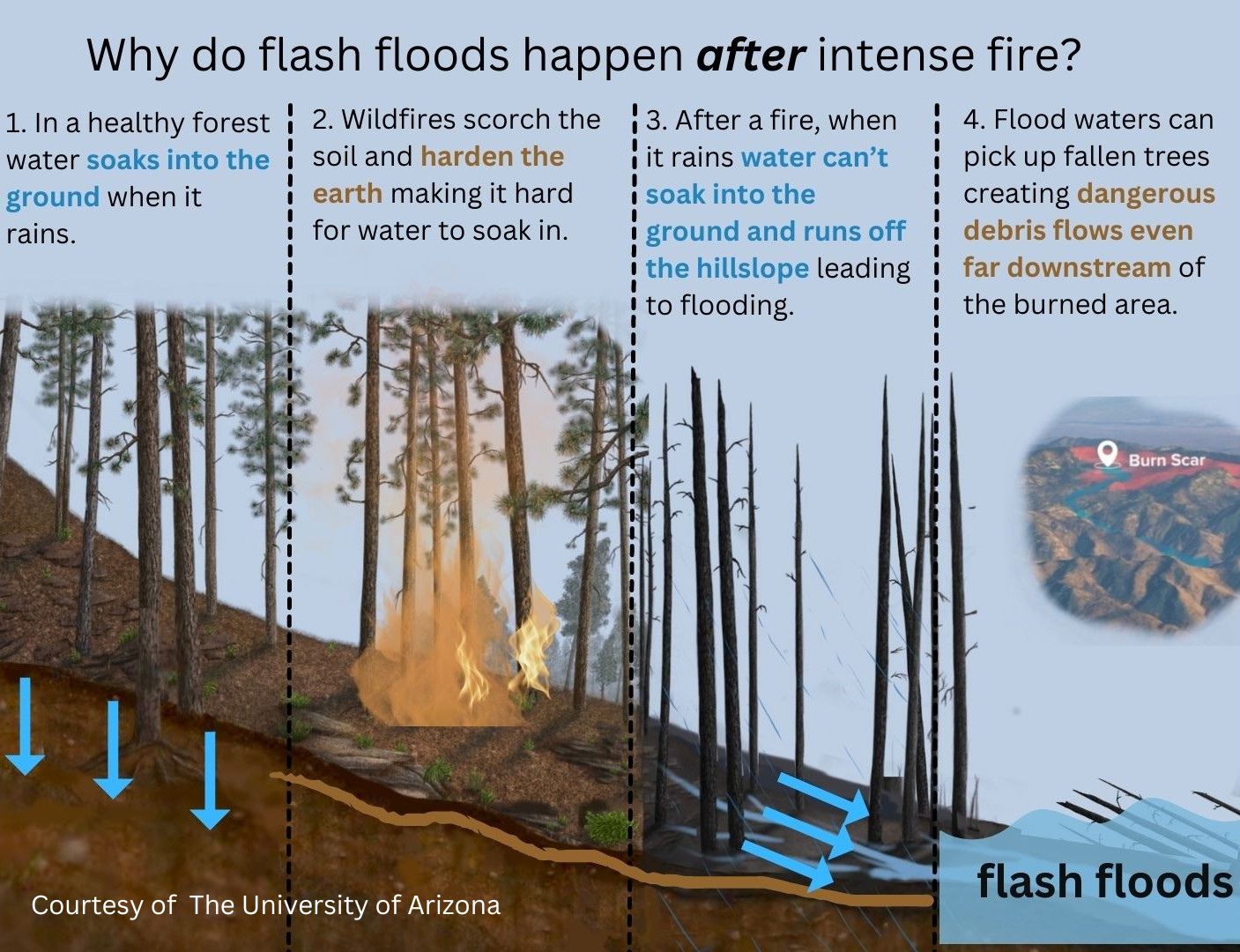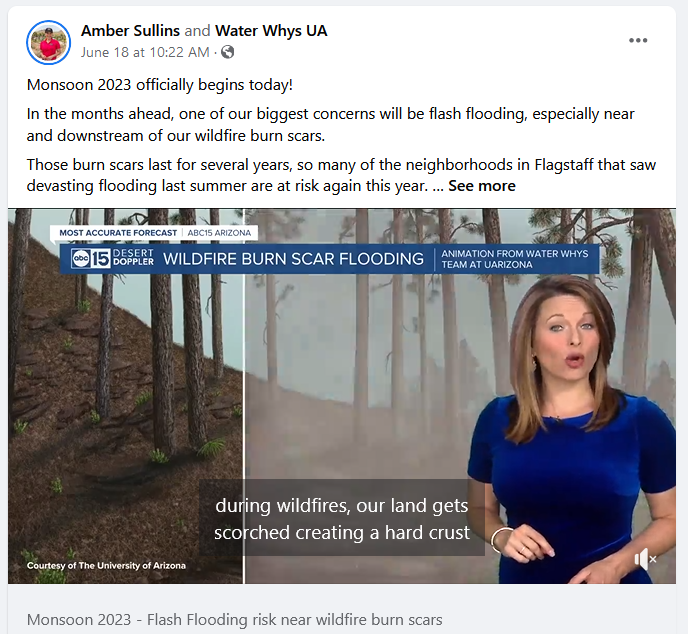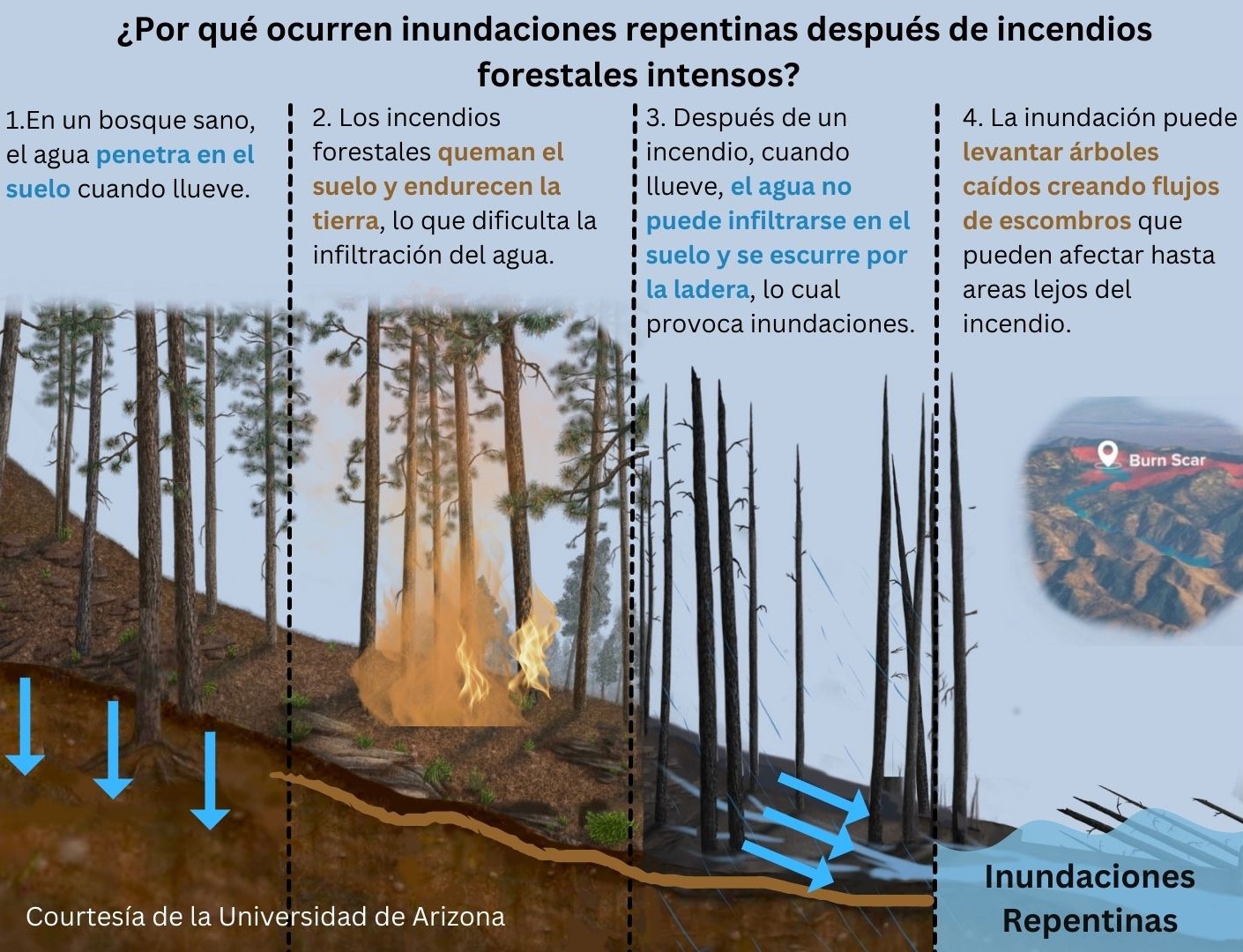Why do flash floods happen after extreme wildfires?
The short answer:
Under normal conditions, when it rains a lot of that water soaks into the ground. Intense wildfires remove vegetation and burn the soil making it harder for water to soak in. This means that more water flows directly into streams and rivers and this can lead to flash flooding, especially in mountainous regions. Additionally, downed trees can also be swept downstream leading to dangerous debris flows.
Media downloads:
| NAME | DESCRIPTION | SIZE | LENGTH |
|---|---|---|---|
| Flash Floods & Wildfires Animation (zip) | Video (mp4) with no voiceover or captions plus English script | 120 MB | 43s |
| Flash Floods & Wildfires English Voice (zip) | Video (mp4) with English voiceover and captions | 120 MB | 50s |
Design team:
Student Developers:
Xenia DeGracia, Denise Meeks, David Morales, Lillie Orth-Williams, Sofia Rodriguez, Hisashi Colman, Alexandra Lombard
Translator:
Xenia DeGracia
Advisors:
Project Manager: Sara Kobilka
Science Advisor: Laura Condon, Ty Ferrie
Communications Advisor: Carol Schwalbe
Graphic Designer:
Katie Yung
Infographic:
(click image to enlarge)
On Social Media:
Video Source: ABC15 Arizona
References and Additional Resources:
To learn more about this question checkout these resources:
- FEMA prepare for floods after fires
- National Flood Insurance Protection Program. (Jan, 2012). Flood after fire fact sheet.
- Pima County. (2023). Floods follow fires.
¿Por qué ocurren inundaciones repentinas después de incendios forestales intensos?
La respuesta corta:
En condiciones normales, cuando llueve, mucha de esa agua empapa el suelo causando infiltración del agua. Los incendios forestales intensos eliminan la vegetación y queman el suelo, lo que dificulta la penetración del agua. Esto significa que fluye más agua directamente a los arroyos y ríos lo cual puede provocar inundaciones repentinas, especialmente en las regiones montañosas. Además, los árboles caídos también pueden ser arrastrados río abajo, lo que genera peligrosos flujos de escombros.
Materiales disponibles para descarga:
| TITULO | DESCRIPCIÓN | TAMAÑO | DURACIÓN |
|---|---|---|---|
| Flash Floods & Wildfires Animation (zip) | Video sin voz y sin subtítulos | 120 MB | 43s |
El equipo de Diseño:
Estudiante Desarrolladores:
Xenia DeGracia, Denise Meeks, David Morales, Lillie Orth-Williams, Sofia Rodriguez, Hisashi Colman, Alexandra Lombard
Traducta:
Xenia DeGracia
Consejeros:
- La Manejada del Projecto: Sara Kobilka
- Science Advisor: Laura Condon, Ty Ferrie
- Communications Advisor: Carol Schwalbe
Diseñador Gráfico:
Katie Yung
Infografía:
(haga clic en la imagen para ampliar)
En las redes sociales:
Referencias y recursos adicionales:
Para obtener más información sobre esta pregunta, consulta estos recursos:
- La página oficial de FEMA con información acerca de inundaciones.
- National Flood Insurance Protection Program. (Jan, 2012). Flood after fire fact sheet.
- Pima County. (2023). Las inundaciones siguen a los incendios.



